#cosmicmicrowavebackground
Explore tagged Tumblr posts
Text

Cosmic microwave background experiments could probe connection between cosmic inflation, particle physics
More Details: Title: International Research Awards on High Energy Physics and Computational Science by ScienceFather. Website: physics.sciencefather.com Visit Our Award Nomination : https://x-i.me/hepnom Contact us : [email protected]
Get Connected Here: ================== Facebook : https://x-i.me/yHa5 Instagram : https://x-i.me/Vn71 Twitter : https://x-i.me/unl4 Pinterest : https://x-i.me/y7HN Blog : https://x-i.me/IMSO tumblr : https://x-i.me/Z7js
#CosmicMicrowaveBackground#CosmicInflation#ParticlePhysics#Astrophysics#Cosmology#BigBangTheory#CMB#EarlyUniverse#TheoreticalPhysics#QuantumPhysics#DarkMatter#DarkEnergy#ScienceResearch#SpaceExploration#PhysicsResearch#UniverseOrigins#ScienceFather#scifax#proffessor#students#ResearchScholar#awardwinner#scientist#PhD
1 note
·
View note
Text
'Physics itself disappears': Thomas Hertog and Stephen Hawking producing his final, most radical theory of everything | livescience.com
Stephen Hawking photographed at at Emmanuel College on September 19, 2013 in Cambridge. (Image credit: Karwai Tang/Getty Images) Thomas Hertog tells us how he collaborated with Stephen Hawking on his final theorem — a Darwinian revolution in physics that explains the origin of time. Story by Ben Turner published in livescience, June 11 2024 Source: ‘Physics itself disappears’: How theoretical…

View On WordPress
#BigBang#cosmicmicrowavebackground#EN#Hawkings. TOE#HolographicUniverse#multiverse#ParticlePhysics#quantumMechanics#StephenHawking#TheoryOfEverything#ThomasHertog
0 notes
Text
Unraveling the Mystery: A Billion-Light-Year Void in Space - Gateway to Alternate Realities?
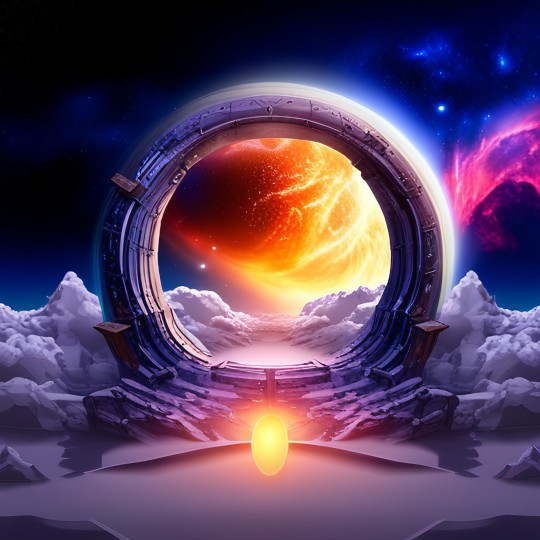
Hey there, Tumblr space enthusiasts! 🚀 Prepare for a cosmic journey as we delve into one of the most enthralling discoveries in the universe: A void in space that's a staggering billion light-years wide.
Scientists have stumbled upon what can only be described as a cosmic conundrum. Radio astronomers have discovered the largest hole ever seen in the universe, nearly a billion light-years across, void of any usual cosmic matter (source). This discovery challenges our conventional understanding of the cosmos and opens up mind-boggling possibilities.
Dubbed the 'Cold Spot,' this unusually cool region in the cosmic microwave background has sparked theories about alternate realities (source). Could this massive void be a gateway to other universes? Or is it simply a region with below-average density, as some scientists speculate (source)?
Interestingly, researchers suggest that we might be living inside a similar void, known as the KBC void. It's believed to be seven times bigger than normal voids, with a radius of around 1 billion light-years (source).
The Boötes Void, another gigantic void, spans nearly 330 million light-years across and is one of the largest voids visible in the universe (source).
These cosmic voids, immense and mysterious, inspire awe and curiosity. They challenge our understanding of the universe and tantalize us with the possibility of parallel universes and alternate realities. So, the next time you gaze up at the night sky, remember: there's more to the cosmos than meets the eye.
Keywords: Void in Space, Billion Light-Years, Cold Spot, Alternate Realities, KBC Void, Boötes Void, Universe, Cosmic Microwave Background, Radio Astronomers.
Follow me on Instagram
instagram
#VoidInSpace#Space#BillionLightYears#ColdSpot#AlternateRealities#KBCVoid#BoötesVoid#Universe#CosmicMicrowaveBackground#RadioAstronomers#SpaceExploration#Astronomy#Cosmology#Instagram
0 notes
Text
LiteBIRD Mission Unveils Cosmic Secrets Worldwide
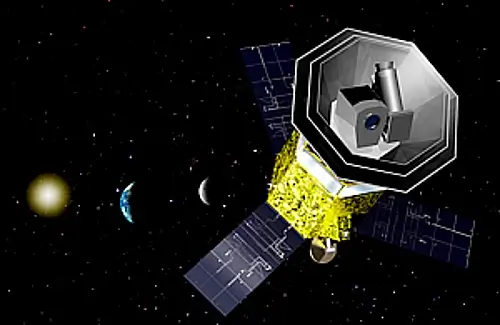
UK's Role in Cosmic Exploration
In a pivotal contribution to the quest for understanding the origins of the universe, the United Kingdom is set to play a crucial role in the pioneering LiteBIRD mission. Led by Japan, this ambitious mission aims to trace patterns in light from space, taking us on a journey back to the very birth of the cosmos, a monumental leap in our comprehension of the universe's beginnings. Probing the Big Bang The LiteBIRD mission, short for 'Light satellite for the study of B-mode polarization and Inflation from cosmic background Radiation Detection,' focuses on analyzing variations in the light that was left behind after the Big Bang. Its primary mission is to scrutinize the prevailing cosmological inflation theory, which describes the rapid expansion of the universe immediately following its creation.

A section of a detailed representation of the distribution of CMB radiation density. Photo by NASA - WMAP Science Team.
UK's Investment and Contributions
The UK Space Agency has committed an initial investment of £2.7 million to support the LiteBIRD mission. This financial backing will serve two primary purposes: UK Scientists at the Helm Firstly, it will enable a group of UK scientists to engage in designing critical components of LiteBIRD's specialized science instruments and analyzing their findings. Cardiff University's Unique Expertise Secondly, Cardiff University, renowned for its unique expertise, will produce the lenses and filters required for the telescopes. This distinct capability positions the university as the sole institution worldwide capable of creating these specialized components.
Future Commitments
The UK Space Agency's commitment doesn't stop here. It intends to inject a total of £17 million throughout the mission's lifespan, slated for launch before 2030. This reaffirms the UK's dedication to pushing the boundaries of space exploration and deepening its collaborations, particularly with Japan.
A Growing UK-Japan Partnership
The LiteBIRD mission is but one facet of the growing partnership between the UK and Japan in the field of space exploration. The commitment to this mission was unveiled during the International Astronautical Congress in Baku, Azerbaijan, where the UK pledged £1.7 million from its £20 million International Bilateral Fund to support Viasat's In-Range telemetry relay service, designed for Mitsubishi Heavy Industry's H3 launch vehicle, scheduled for liftoff in 2025. George Freeman MP, Minister for Space at the Department for Science, Innovation, and Technology, expressed his enthusiasm, stating, "This initial £2.7 million investment... is a great moment for both UK space science and technology and our deepening science, technology, and innovation collaboration with Japan."
A Game-Changing Mission
Dr. Paul Bate, Chief Executive of the UK Space Agency, anticipates that LiteBIRD will be a game-changer in the field of cosmology, enabling scientists to put prevailing theories about the universe's origins to the test. He described it as: "incredibly exciting for the UK to be at the forefront of this mission." Challenging Cosmological Inflation At the heart of LiteBIRD's mission is the challenge to the cosmological inflation theory. This theory postulates the existence of "primordial gravitational waves" observable within the cosmic microwave background (CMB), the lingering light from the early universe. LiteBIRD intends to examine the pattern of B-mode polarization in the CMB to either confirm or disprove this influential theory.
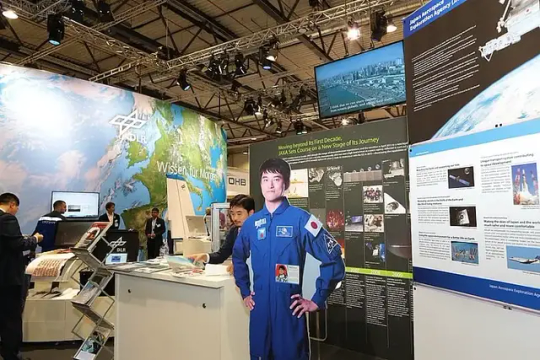
JAXA Exhibiting at the Berlin ExpoCenter Airport. Photo by DLR German Aerospace. Flickr.
A Multinational Endeavor
Coordinated by the Japanese Aerospace Exploration Agency (JAXA), the LiteBIRD mission is poised to deploy a combination of high-, mid-, and low-frequency telescopes. These advanced instruments aim to detect B-mode signals in the cosmic microwave background (CMB) with an unparalleled level of sensitivity. The UK's active involvement is seamlessly integrated into this collaborative effort. This partnership operates through a European Consortium, masterfully led by the French space agency CNES. Notably, CNES holds the responsibility for delivering the high and mid-frequency telescopes, further enhancing the mission's scientific capabilities. Leading Optical Development Cardiff University takes the lead in optical design and component development. Additionally, they receive support from other prominent UK universities, including Cambridge, Mullard Space Science Laboratory, University College London, Oxford, Manchester, and Sussex. Professors Peter Hargrave and Erminia Calabrese will spearhead the UK's contribution from Cardiff University. Their primary focus will be on designing and building optics for two telescopes and filters for the third, which is Japanese-built. The Search for Gravitational Waves Professor Hargrave, LiteBIRD UK Consortium Principal Investigator, shared his excitement, noting that LiteBIRD's mission will "confirm or rule out broad classes of inflation models, and greatly enhance our understanding of the origins of our Universe." Dr. Kuninaka Hitoshi, DG, Institute of Space and Astronautical Science (ISAS), Japan Aerospace Exploration Agency (JAXA), highlighted the international cooperation behind the mission and the invaluable contributions of the UK, including Cardiff University's unique technology.
Beyond LiteBIRD
In addition to its role in the LiteBIRD mission, the UK Space Agency is also supporting experts at the University of Aberdeen in designing an instrument for a future JAXA Mars rover. Named "Habit," this device will explore the habitability of the landing site, provide environmental information, and demonstrate In-Situ Resource Utilization technology for future Mars exploration.
Looking for Traces of Cosmological Inflation
The concept of cosmological inflation and its connection to LiteBIRD's mission is a fascinating area of study. The theory asserts that immediately after the Big Bang, the universe underwent exponential expansion, leaving traces observable in the cosmic microwave background (CMB) as "primordial gravitational waves." The Cosmic Microwave Background The CMB, composed of remnant light from the early universe when it was a hot plasma, appears largely uniform but contains subtle variations. These variations, corresponding to gravitational waves imprinted on B-mode polarization signals in the CMB, hold the potential to shed light on the universe's immediate post-Big Bang history.
UK Space Agency's Support and Engagement
The UK Space Agency's involvement in the LiteBIRD mission extends beyond financial support. It encompasses a group of UK scientists tasked with designing the mission's specialized telescope optical instruments. Moreover, Cardiff University's unique expertise comes into play as it manufactures the lenses and filters essential for LiteBIRD's telescopes. Collaboration in Action The mission operates within a European Consortium, led by France's CNES, with the UK taking a prominent role. Much of the optical design and component development are overseen by Cardiff University, with support from various UK institutions. Optics and Filters Cardiff University's team will design and construct optics for two telescopes and filters for the third, all of which are pivotal for LiteBIRD's success.
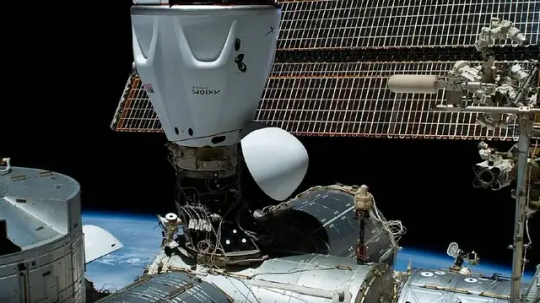
The SpaceX Dragon spacecraft is pictured docked to the space-facing port on the International Space Station. Photo by NASA.
Unveiling LiteBIRD's Mission
LiteBIRD, a mission led by the Japanese Aerospace Exploration Agency (JAXA), has a noble aim: to uncover compelling evidence that supports the cosmological inflation theory. Crafted and meticulously manufactured by the Institute of Space and Astronautical Science (ISAS) in Japan, this spacecraft will carry a weight of approximately 450 kg. Furthermore, it will be launched into the cosmos using the powerful H3 launch vehicle. Detecting B-Mode Signals LiteBIRD's primary objective is to detect B-mode signals within the CMB. This data will provide conclusive evidence regarding the nature of the universe's expansion in the moments following the Big Bang.
The Telescopes of LiteBIRD
LiteBIRD will execute a comprehensive three-year full-sky survey from the Sun-Earth Lagrangian point (L2). In order to achieve this ambitious goal, it will employ three telescopes. Moreover, each of these telescopes will cover a range of light frequencies: the Japanese-delivered Low-Frequency Telescope (LFT) and the European-delivered Medium-High Frequency Telescope (MHFT). Furthermore, these telescopes will utilize cutting-edge technology, including around 4,500 transition edge sensors spread across 15 observational frequency bands. Cutting-Edge Technology LiteBIRD's telescopes are equipped with state-of-the-art lenses and specialized frequency filters. Consequently, they will operate at a cryogenic temperature of around 100 mK to minimize thermal noise and employ superconducting polarimeters for exceptionally sensitive measurements of B-mode signals' polarization. In a groundbreaking cosmic exploration endeavor, the UK's involvement in the LiteBIRD mission signifies a significant leap forward in our understanding of the universe's birth and early evolution. Furthermore, as the mission sets its sights on the cosmic microwave background and the traces of cosmological inflation, the UK's scientific and technical contributions play a pivotal and indispensable role in advancing our knowledge of the cosmos. With a mission launch anticipated before 2030, the world eagerly awaits the revelations that LiteBIRD will bring to the forefront of cosmological research. Sources: THX News & UK Space Agency. Read the full article
#B-ModeSignals#CardiffUniversityOptics#CosmicMicrowaveBackground#CosmologicalInflationTheory#GravitationalWaves#InflationTheoryEvidence#JAXAMarsRover#LiteBIRDMission#UKSpaceAgency#Universe'sOrigins
0 notes
Text
The Quest for Habitable Worlds Beyond Our Solar System
Planets-Like-Earth
This is an artist’s impression of innumerable Earth-like planets that have yet to be born over the next trillion years in the evolving universe. Credits: NASA, ESA, and G. Bacon (STScI) The search for planets like Earth, often referred to as “exoplanets,” has ignited a profound sense of wonder and curiosity among astronomers and the general public alike. In recent years, incredible advancements…
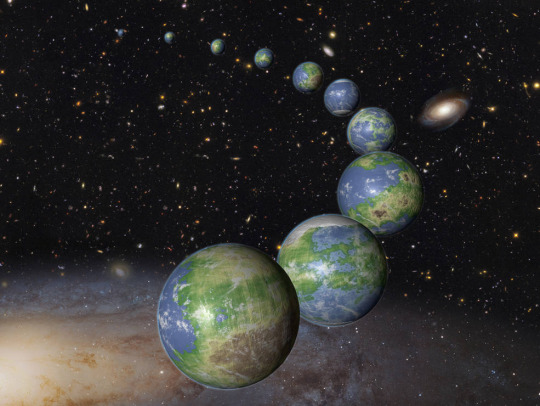
View On WordPress
#Astrobiology#AstronomicalCatalogs#AstronomicalDatabases#AstronomicalImaging#AstronomicalInstruments#AstronomicalObservations#AstronomicalPhenomena#AstronomicalSpectroscopy#AstronomicalSurveys#AstronomicalUnits#BlackHoles#CelestialBodies#Constellations#CosmicMicrowaveBackground#Cosmology#DarkEnergy#DarkMatter#Exoplanets#Galaxies#LightYears#MeteorShowers#Nebulae#Planets#SolarSystem#SpaceExploration#Stars#StellarEvolution#Supernovae#Telescopes
0 notes
Text
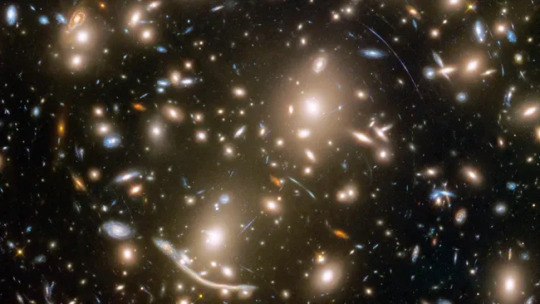
'Our model of cosmology might be broken': New study reveals the universe is expanding too fast for physics to explain
A recent study has revealed a puzzling discrepancy in our understanding of the universe’s expansion rate, suggesting that our current cosmological models may need a significant overhaul. The crux of the issue lies in the Hubble constant (H₀), a measure of the universe's expansion rate, which appears to differ depending on how it is calculated.
However, these two methods yield conflicting results. The CMB method, based on data from missions like Planck, estimates H₀ to be around 67.4 kilometers per second per megaparsec (km/s/Mpc). In contrast, local measurements consistently suggest a higher value of approximately 73 km/s/Mpc. This "Hubble tension" implies a difference of around 10%, far exceeding experimental uncertainties and statistical errors.
The implications of this discrepancy are profound. If both methods are accurate, it means our current model of cosmology, based on the Lambda Cold Dark Matter (ΛCDM) framework, is incomplete or incorrect. ΛCDM assumes a universe dominated by dark energy, dark matter, and ordinary matter. The tension hints at potential new physics, such as unknown interactions in the early universe, exotic forms of dark energy, or a need to revise general relativity on cosmic scales.
Several proposed solutions are under investigation. These include modifications to the standard model of particle physics, the existence of new particles, or errors in our understanding of cosmic distance measurements.While the debate continues, the Hubble tension underscores the dynamic and evolving nature of cosmology. The resolution of this mystery could reshape our understanding of the universe's origin, structure, and ultimate fate, paving the way for groundbreaking discoveries in fundamental physics.While the debate continues, the Hubble tension underscores the dynamic and evolving nature of cosmology. The resolution of this mystery could reshape our understanding of the universe's origin, structure, and ultimate fate, paving the way for groundbreaking discoveries in fundamental physics.
#Cosmology #HubbleTension #UniverseExpansion #Astrophysics #BigBangTheory #DarkEnergy #HubbleConstant #ScienceNews #SpaceScience #PhysicsMystery #CosmicMicrowaveBackground #AstronomyLovers #NewPhysics #CosmicDiscovery #StandardModel #DarkMatter #SpaceExploration #ScienceResearch #PhysicsResearch #CosmologyResearch #ScienceInnovation #AstrophysicsResearch #ResearcherLife #SpaceScienceResearch #STEMResearch #ScientificDiscoveries #ScienceExploration #ResearchAndDevelopment #ScienceCommunication #FutureOfScience #AcademicResearch #ScienceForTheFuture #ScienceEducation #ResearchInspiration #WomenInScience #PhysicsLover #AstronomyResearch
International Young Scientist Awards Website link: youngscientistawards.com Nomination Link: https://youngscientistawards.com/award-nomination/?ecategory=Awards&rcategory=Awardee Contact Us: [email protected] _________________________________________________________________________________________________________ Social Media: Twitter : https://twitter.com/youngsc06963908 Linkedin- : https://www.linkedin.com/in/shravya-r... Pinterest : https://in.pinterest.com/youngscienti... Blog : https://youngscientistaward.blogspot.... Tumblr : https://www.tumblr.com/blog/shravya9v
0 notes
Video
youtube
nameJourney Through Cosmic History_ From Big bang to now.
Join us on an epic journey through time and space as we unravel the mysteries of the universe's birth! 🌌 From the initial singularity to the explosive expansion known as the Big Bang, discover how energy transformed into matter, paving the way for the formation of the first atomic nuclei. Dive into the chaotic early universe and witness the fascinating process of nucleosynthesis, creating elements like hydrogen, helium, and lithium. Learn about the Cosmic Microwave Background radiation and the pivotal era of recombination, leading to the Cosmic Dark Ages and the birth of galaxy seeds. Like and share if you are fascinated by the cosmos! 🌠
#BigBang #UniverseCreation #CosmicJourney #Nucleosynthesis #Astrophysics #CosmicMicrowaveBackground #SpaceExploration
OUTLINE:
00:00:00 The Big Bang 00:04:29 The First Particles 00:07:33 A Universe Bathed in Light 00:11:00 The Cosmic Dark Ages 00:12:02 cosmic history
0 notes
Video
youtube
Universal Life, An Epic Exploration Of Possibilities JUPITER *1
#universe #space #cosmos #astrophysics #mysteriesoftheuniverse #blackholes #darkmatter #aliens #exoplanets #supernova #gravitationalwaves #cosmology #bigbang #nebula #interstellar #astrobiology #quantummechanics #stringtheory #multiverse #astronomy #NASA #ESA #Hubble #Kepler #Spitzer #Chandra #JWST #LIGO #CMB #cosmicmicrowavebackground #cosmicinflation #galaxyclusters #pulsars #neutronstars #cosmicrays #stellarformation #darkenergy #cosmicweb #wormholes #paralleluniverses #ET #SETI #spaceexploration #Science, #Entertainment, #Documentaries, #Cosmology,#Earth Environment #SciFi #sci-fi #Humanity, #sun, #mars, #Jupiter, #space, #myths, #Science
0 notes
Photo

Pressed against another universe ✨ @prettylittlething So many ideas about what the cold spot actually is on the #CMB 🤓 my favorite is & always will be the multie verse hypothesis #scienceissexy #cosmicmicrowavebackground #prettylittlething #naturalcurls #blue https://www.instagram.com/p/B6T-bHenuE4/?igshid=1w18h4kqw67g5
8 notes
·
View notes
Video
Damn this new #stevenuniversefuture #scene is why #rebeccasugar is one of my favorite #artists today . . . #trippy #dreamsequence #colorbars #tv #cosmicmicrowavebackground #wiptb #stevenuniverse #peridot #camppininghearts #poutinealergy #analog #vhsart #irelate #su #crystalgems #getreal https://www.instagram.com/p/B9cxrkHFHR-/?igshid=195j4gice12oy
#stevenuniversefuture#scene#rebeccasugar#artists#trippy#dreamsequence#colorbars#tv#cosmicmicrowavebackground#wiptb#stevenuniverse#peridot#camppininghearts#poutinealergy#analog#vhsart#irelate#su#crystalgems#getreal
2 notes
·
View notes
Video
Cosmic Microwave Glitch Featuring Cosmic Recalibration Sheath Dress : : #cosmicmicrowavebackground #cosmosdress #consciousness #glitchoftheday #vaporwave #girlgif #glitchartistcommunity #glitché #minimovie #lofiblue #lofi https://www.instagram.com/p/B6MVGpsnJt1/?igshid=q3emxzomau9o
#cosmicmicrowavebackground#cosmosdress#consciousness#glitchoftheday#vaporwave#girlgif#glitchartistcommunity#glitché#minimovie#lofiblue#lofi
1 note
·
View note
Link
Galaxies and the Big Bang Theory | Science & Technology | Nikhil | Tone Academy Galaxies and the Big Bang Theory This video details: -Types of Galaxies - Regular Galaxies - Elliptical Galaxies - Milky Way - Big Bang Theory - Big Crunch - Cosmic Microwave Background - Dark Matter -Gravitational Waves #Galaxy #BigBangTheory #RegularGalaxies #EllipticalGalaxies #MilkyWay #AkashGanga #BigCrunch #DarkMatter #BlackHoles #CosmicMicrowaves #CosmicMicrowaveBackground #GravitationalWaves For any queries/doubts/information - we are just an email away - mail us @ [email protected] Subscribe to : https://bit.ly/2YQOgbs https://www.youtube.com/playlist?list...
#MilkyWay#AkashGanga#BigCrunch#DarkMatter#BlackHoles#CosmicMicrowaves#CosmicMicrowaveBackground#GravitationalWaves
0 notes
Text
New James Webb Space Telescope image shows 45,000 galaxies in unprecedented detail
The James Webb Space Telescope turned its sights on a special region in space, where it has revealed some of the youngest galaxies ever observed. Source: New James Webb Space Telescope image shows 45,000 galaxies in unprecedented detail The James Webb Telescope looks farther back into the history of our universe than any other telescope or dish–array before and yields data that help to better…

View On WordPress
#BigBang#BlackHoles#cosmicmicrowavebackground#earlyuniverse#EN#JamesWebbTelescope#Reionization#starformation#Universe
0 notes
Text
List of Apollo Moon Missions and Moonwalkers
Credit: NASA, ESA, CSA, and STScI List of Apollo Moon Missions and Moonwalkers: Apollo 11 (July 20, 1969): Neil Armstrong Edwin “Buzz” Aldrin Apollo 12 (November 14-24, 1969): Charles “Pete” Conrad Jr. Alan L. Bean Apollo 14 (February 5-9, 1971): Alan B. Shepard Jr. Edgar D. Mitchell Apollo 15 (July 26-August 7, 1971): David R. Scott James B. Irwin Apollo 16 (April 16-27,…
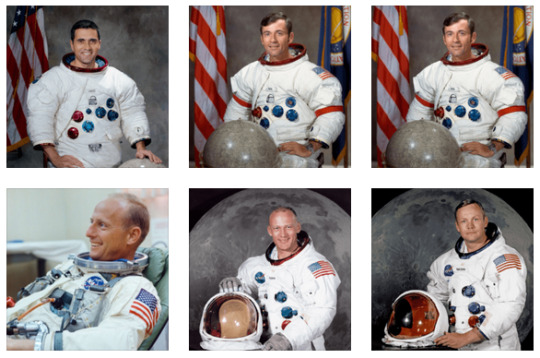
View On WordPress
#AstronomicalCatalogs#AstronomicalConstants.#AstronomicalDatabases#AstronomicalImaging#AstronomicalInstruments#AstronomicalObservations#AstronomicalPhenomena#AstronomicalSpectroscopy#AstronomicalSurveys#AstronomicalUnits#BlackHoles#CelestialBodies#CosmicMicrowaveBackground#DarkEnergy#DarkMatter#LightYears#MeteorShowers#SolarSystem#SpaceExploration#StellarEvolution#Astrobiology#Constellations#Cosmology#Exoplanets#Galaxies#moon landing#Nebulae#Planets#Stars#Supernovae
0 notes
Photo

Eğer evren şu anda genişlemekte ise, filmi geçmişe sararak, geçmişte evrenin daha sıkışık ve dolayısıyla daha sıcak olması gerektiğini bekleriz. Eğer evrenin bir başlangıcı varsa ve çok küçük bir hacimden genişlediyse, evrenin erken dönemlerinde ortam çok yoğun ve sıcak olmalıdır. Böylesi sıcak bir ortamda fotonlar, etkileşmeden serbest bir şekilde hareket edemez. Fakat evren yeterince genişler ve soğursa, fotonların serbest bir halde hareket etmeleri mümkün hale gelir. Bugün son saçılma yüzeyi (gerçek bir yüzey değil, hayali bir yüzey) olarak adlandırdığımız bu dönemin, evrenin yaklaşık 380.000 yıl yaşındaki zamanına denk geldiğini biliyoruz. Kozmik mikrodalga arkaplan ışınımı ise, tam olarak bu yüzeyden bize ulaşan fotonlardır. Yani evrenin 380.000 yıl yaşındaki halinden bu yana yolculuk etmekte olan fotonları görmekteyiz. Alpher, Herman ve Gamow, 1948 yılında yaptıkları çalışmada, genişlemekte olan büyük patlama evreninin 5 Kelvin sıcaklığına denk bir kara cisim ışıması yapması gerektiğini öngördüler. Penzias ve Wilson ise 1964-65 yıllarında kazara, gökyüzünün her yönünden eşit bir şekilde gelen ve 3 Kelvin’e denk bir ışıma keşfettiler. Elbette bunun ne olduğunun anlaşılması çok sürmedi, çünkü teoriler önceden böyle bir durumu öngörüyordu. Fakat sıcaklığı tahmin edilenden fazla öngörmüşlerdi. İki bilim insanı 1978’de bu büyük keşiflerinden dolayı Nobel Fizik Ödülü‘nü de almışlardır Biz çok farkında olmasak ta aslında ışımayı günlük hayatımızda görüyoruz. Örneğin TV’de yayın koptuğunda oluşan karıncalanma ve radyo frekansı değiştirirken çıkan ses bu ışımanın göstergesidir. • Hazırlayan ve düzenleyen:@_ysnplt • Kaynaklar: https://astronomy.com/magazine/2018/07 /decoding-the-cosmic-microwave-background • https://archive.briankoberlein.com/2015/06/15/scie nce-in-the-raw/index.html • Etiketler #bilimadamları #bilimşenliği #bilimdünyası #bilim_akimat #bilimfuarı #bilimteknik #bilimselçalışmalar #bilimveteknoloji #ilginç #ilginçfikirler #ilgincvideolar #i̇lginç #cosmicmicrowavebackground #kozmikenerji #kozmikmikrodalgaarkaplanişıması #kozmikenerjiterapisi #kozmoloji https://www.instagram.com/p/CDBwMcqHsL8/?igshid=e499au3n0fb2
#bilimadamları#bilimşenliği#bilimdünyası#bilim_akimat#bilimfuarı#bilimteknik#bilimselçalışmalar#bilimveteknoloji#ilginç#ilginçfikirler#ilgincvideolar#i̇lginç#cosmicmicrowavebackground#kozmikenerji#kozmikmikrodalgaarkaplanişıması#kozmikenerjiterapisi#kozmoloji
0 notes
Photo

#TBT ~ The whole family in just one picture... Can you see yourself there? I still remember it as if it were 13.700 million years ago 😂 #nerd #cosmicmicrowavebackground #CMB #familyportrait #Cosmos (en Universo Paralelo) https://www.instagram.com/p/CDAq9a6AL1e/?igshid=1fvszo866ek1j
0 notes